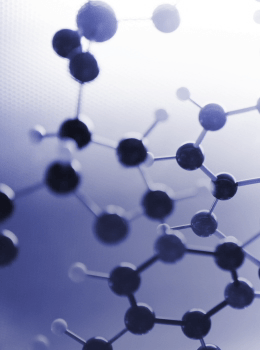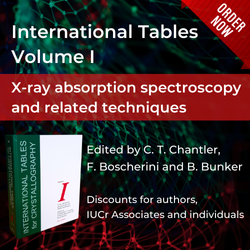
Feature article
“Aperiodic crystal”
![thumbnail [thumbnail]](https://www.iucr.org/__data/assets/image/0003/158655/thumbnail.jpg)
Aaron Klug’s tutorial to Istvan Hargittai in Klug’s office at the MRC Laboratory of Molecular Biology, Cambridge, UK, on 18 February 2000 (taken by unknown photographer).
'An aperiodic crystal is a structure with sharp diffraction peaks, but without lattice periodicity' [1].1 This is a modern definition thanks to crystallography having become a science of structures, i.e. more than what classical crystallography is. As far as I know, the theoretical physicist Erwin Schrödinger (1887–1961) was the first to use the term 'aperiodic crystal' in his most influential book What is Life? published in 1944, i.e. 80 years ago [2]. The book appeared at a time when the nature of the gene was not yet known but there was intensifying interest and research effort to identify it. Schrödinger’s book pointed to the possibility that the gene may be molecular. In a remarkable coincidence, also in 1944, Oswald T. Avery (1877−1955) and his two associates provided experimental evidence that DNA was the substance of heredity [3].
Schrödinger’s book hinted at the intriguing possibility that, for understanding life, heretofore unknown physical laws might have to be uncovered. This possibility added to the recent lure of biological research, and both established scientists and budding researchers joined in (see e.g. [4]). Schrödinger’s ideas have earned much appreciation, but also criticism. Forty-three years after the publication of the book, Max Perutz noted ungenerously that 'what was true in his book was not original, and most of what was original was known not to be true even when it was written' ([5], p. 558).
To Schrödinger, a small molecule would be an initial seed for the gene. Its extension by mere repetition – the way a crystal is formed – could not lead to the gene because periodicity would exclude carrying information. The other way to extend the initial seed molecule would be to build up a complex organic molecule – proteins could be such systems, or DNA as we know it today. DNA, as it was known in Schrödinger’s time, could not be considered the substance of genes as it had been hypothesized to be uniformly repetitive (see e.g. [6]).
Curiously but understandably, Schrödinger’s aperiodic crystal has not been related to the aperiodic structures in modern crystallography, i.e. quasicrystals and various classes of incommensurate structures. The reason is that the relationship is not functional, merely semantic. However, an interesting analogy may be drawn between Schrödinger’s aperiodic crystal and Aaron Klug’s (1926−2018) idea of the fundamental difference between ordinary polymer molecules and biopolymers. The ordinary polymer consists of periodic repetition of the basic motif whereas the biopolymer has variability. From this, Klug recognized that identifying nucleation, i.e. the initial seed, was necessary for understanding the structure of a biopolymer. There was a further lesson in Klug’s discovery. When he put together his Nobel lecture for publication, the editor wanted him to delete the picture depicting Klug’s original idea of nucleation [7]. Klug admitted that it was wrong in detail, but its inclusion demonstrated a process in science of establishing the truth. Klug referred to the philosopher Alfred N. Whitehead (1861−1947), coauthor with Bertrand Russell of the famous Principia Mathematica, who said 'It is more important that an idea be fruitful than that it be correct' ([7], p. 313). This may also apply to Schrödinger’s aperiodic crystal.
References
[1] International Union of Crystallography (1992). Acta Cryst. A48, 922–946.
[2] Schrödinger, E. (1944). What is Life? Cambridge University Press.
[3] Avery, O. T., MacLeod, C. M. & McCarty, C. (1944). J. Exp. Med. 79, 137–158.
[5] Perutz, M. (1987). Physics and the riddle of life. Nature, 326, 555–558.
[6] Hargittai, I. (2009). The tetranucleotide hypothesis: a Centennial. Struct. Chem. 20, 753–756.
[7] Hargittai, I. (2002). Candid Science II: Conversations with Famous Biomedical Scientists, edited by M. Hargittai, pp. 306–329. London: Imperial College Press. (Conversations with Aaron Klug on 9 October 1998, and in February and March 2000, at the MRC Laboratory of Molecular Biology, Cambridge, UK.)
1For a more recent statement, see the IUCr Online Dictionary of Crystallography: 'In aperiodic crystals (incommensurate and quasicrystals) the arrangement is not periodic in three dimensions but is nevertheless still fully ordered, where the ordering follows particular mathematical rules.'
Copyright © - All Rights Reserved - International Union of Crystallography








